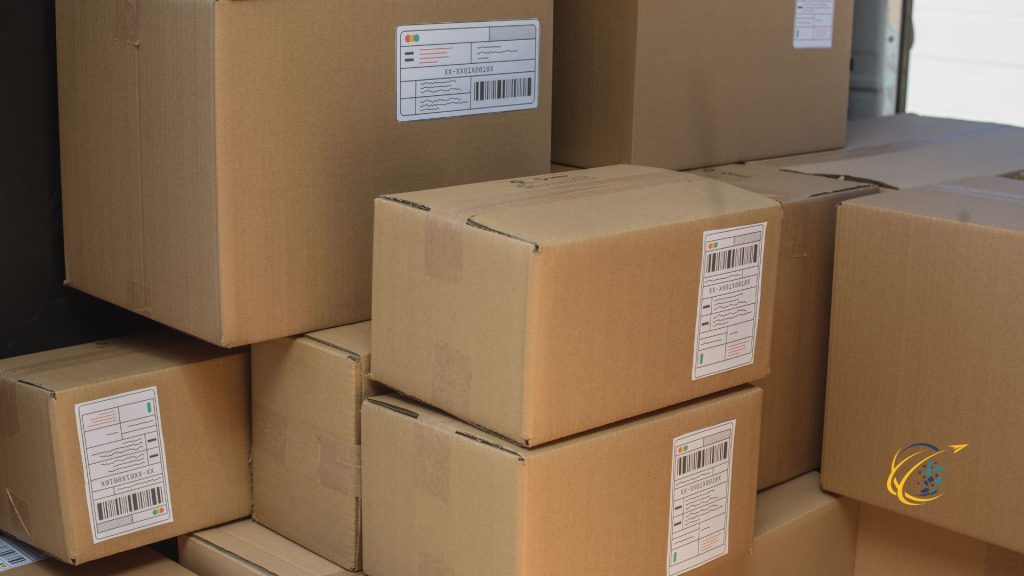Warehousing and Fulfillment play a critical role in the supply chain, directly impacting a company’s ability to meet customer demand. Efficient warehousing stores products in a manner that allows for quick retrieval and order processing. This efficiency is crucial for reducing lead times and minimizing delays. Moreover, effective Fulfillment processes ensure that orders are accurately picked, packed, and shipped to customers on time. When done right, Warehousing and Fulfillment contribute to higher customer satisfaction and repeat business.
In addition to improving customer satisfaction, effective Warehousing and Fulfillment can lead to significant cost savings. By optimizing warehouse space and improving inventory management, businesses can reduce storage costs and avoid stockouts or overstock situations. Streamlined Fulfillment processes also minimize errors, reduce shipping costs, and improve overall operational efficiency. You can reinvest these savings into other areas of the business, driving growth and profitability.
Warehousing and Fulfillment also impact a company’s reputation. In an era where online reviews and social media play a significant role in consumer behavior, businesses must ensure that their Fulfillment processes are reliable and efficient. A single delayed or incorrect order can lead to negative reviews and damage the brand’s reputation. Conversely, a seamless Fulfillment experience can result in positive feedback and customer loyalty.
Key Components of Warehousing and Fulfillment
Warehousing and Fulfillment involve several key components, each of which is critical to the overall success of the operation. The first component is inventory management. Effective inventory management ensures that the right products are available at the right time, reducing the risk of stockouts or excess inventory. This process involves tracking inventory levels, forecasting demand, and managing reorder points. Advanced inventory management systems can automate these tasks, providing real-time visibility into stock levels and enabling better decision-making.
Another important component is order processing. Once an order is received, the Fulfillment process begins with order processing, which includes picking, packing, and preparing the order for shipment. This process must be efficient and accurate to ensure that customers receive the correct products in a timely manner. Many businesses use automated systems to streamline order processing, reducing the risk of human error and speeding up the process.
Shipping and delivery are also critical aspects of Warehousing and Fulfillment. After an order is packed, it must be shipped to the customer as quickly and cost-effectively as possible. This requires choosing the right shipping carriers, negotiating favorable rates, and managing delivery timelines. Businesses must also provide customers with tracking information and updates to keep them informed about the status of their orders. Effective shipping and delivery practices enhance the overall customer experience and contribute to brand loyalty.
Additionally, returns management is a key component of Fulfillment that is often overlooked. A seamless returns process is essential for maintaining customer satisfaction, especially in e-commerce. Businesses must have clear return policies, efficient processing systems, and reliable reverse logistics. By making returns easy for customers, companies can build trust and encourage repeat business.
Challenges in Warehousing and Fulfillment
While Warehousing and Fulfillment are essential to business success, they also come with challenges. One of the most significant challenges is managing fluctuations in demand. Seasonal spikes, promotions, and unexpected changes in customer behavior can lead to sudden increases in order volume. Businesses must be prepared to scale their Warehousing and Fulfillment operations to meet these demands without compromising accuracy or speed.
Another challenge is the complexity of managing a global supply chain. Many businesses source products from different parts of the world and sell to customers in multiple regions. This complexity requires careful coordination of inventory, shipping, and delivery across different time zones and regulations. Additionally, global operations often involve dealing with customs, tariffs, and other logistical challenges that can impact the efficiency of Warehousing and Fulfillment.
Labor shortages and rising labor costs also pose challenges to Warehousing and Fulfillment operations. As demand for skilled labor increases, businesses may struggle to find and retain workers for their warehouses and Fulfillment centers. This challenge is compounded by the growing trend toward automation, which requires workers with specialized skills. To address these challenges, businesses must invest in training, offer competitive wages, and explore automation solutions to improve efficiency.
Furthermore, technology integration can be a significant challenge for businesses, especially those with legacy systems. Modern Warehousing and Fulfillment operations rely heavily on technology, including inventory management software, order processing systems, and automated picking and packing solutions. Integrating these technologies into existing operations can be complex and costly. However, businesses that successfully implement and integrate technology can achieve significant gains in efficiency and accuracy.
Best Practices
To overcome the challenges of Warehousing and Fulfillment and achieve operational excellence, businesses should adopt best practices that promote efficiency, accuracy, and customer satisfaction. One of the most important practices is to invest in technology. Automation and advanced software solutions can streamline inventory management, order processing, and shipping, reducing the risk of errors and speeding up operations. By leveraging technology, businesses can also gain real-time visibility into their operations, enabling better decision-making.
Another best practice is to optimize warehouse layout and design. Efficient warehouse design minimizes the time and effort required to retrieve products, improving order processing times. This optimization includes organizing products based on demand, using vertical space effectively, and implementing efficient picking methods. Regularly reviewing and adjusting the warehouse layout can lead to continuous improvements in efficiency.
Additionally, businesses should focus on building strong relationships with shipping carriers. By negotiating favorable rates and establishing reliable partnerships, companies can reduce shipping costs and ensure timely delivery. It is also important to diversify shipping options to mitigate the risk of delays or disruptions. Offering customers a range of shipping options, including expedited delivery, can enhance the overall Fulfillment experience.
Continuous training and development of warehouse staff are also critical to the success of Warehousing and Fulfillment operations. Well-trained employees are more efficient, accurate, and capable of handling complex tasks. Regular training sessions, clear procedures, and performance incentives can help maintain high standards and improve employee retention.
Moreover, businesses should regularly review and analyze their Warehousing and Fulfillment operations to identify areas for improvement. Key performance indicators (KPIs) such as order accuracy, Fulfillment speed, and customer satisfaction should be monitored closely. By analyzing this data, businesses can identify bottlenecks, inefficiencies, and opportunities for optimization.
The Future of Warehousing and Fulfillment
The future of Warehousing and Fulfillment will be shaped by technological advancements, changing consumer expectations, and the need for sustainability. Automation and robotics will continue to play a significant role in improving efficiency and reducing labor costs. Advanced technologies such as artificial intelligence (AI) and machine learning will enable predictive analytics, allowing businesses to forecast demand more accurately and optimize inventory management.
The rise of e-commerce and the demand for faster delivery will also drive innovation in Fulfillment. Same-day and next-day delivery will become the standard, requiring businesses to develop more agile and responsive Fulfillment networks. Micro-fulfillment centers, closer to urban areas, will help meet these demands while reducing delivery times.
Sustainability will also become a key focus in Warehousing and Fulfillment. Consumers are increasingly concerned about the environmental impact of their purchases, leading businesses to adopt more sustainable practices. This shift includes reducing packaging waste, optimizing transportation routes, and using energy-efficient warehouse technologies.
Warehousing and Fulfillment are critical components of a successful supply chain, directly impacting customer satisfaction and business performance. By understanding the key components, challenges, and best practices, businesses can optimize their operations and achieve a competitive edge. As the industry evolves, companies must stay ahead of trends and invest in technology, training, and sustainability to meet the demands of the future. With a strategic approach to Warehousing and Fulfillment, businesses can ensure that they deliver on their promises to customers, driving long-term growth and success.


